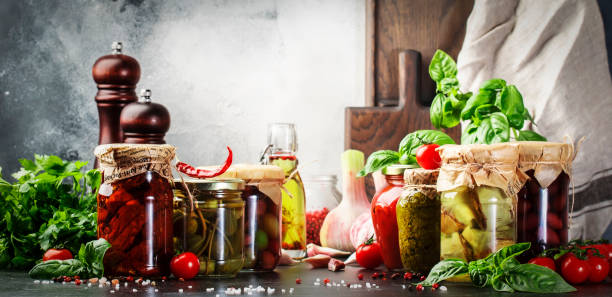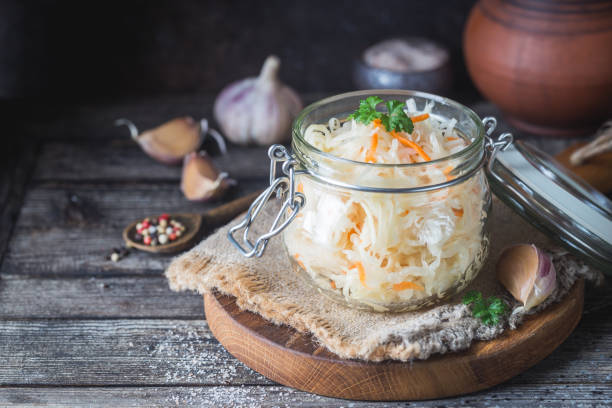Fermentation – a new culinary buzzword or tried and tested kitchen knowledge?
What is it exactly, how does it work and what do I do with fermented vegetables?
A traditional kitchen knowledge that has almost been forgotten, fermentation, is more topical today than ever and is finding its way back into domestic and international professional and hobby kitchens. More and more often we are thinking about old cooking craftsmanship, which we only know from the households of our ancestors. It is boiled down again, pickled and fermented like in the old days to preserve the vegetables from the garden or from the farmer’s market for the “barren months”.

Fermentation of vegetables existed long before canning
The invention of the tin can and the deep freeze made the tried and tested techniques of preservation fall into oblivion. As a result, few people today associate the term “fermentation” with anything that doesn’t sound alchemical and alien. Let alone put fermenting into practice. There are only a few points to consider with fermentation DIY in order to be successful with your own creations.
Fermentation is a natural preservation method for fruit and vegetables
Once fruits and vegetables are harvested, a process of decay and breakdown begins. This is extremely accelerated by microorganisms that live on the surface of these foods. In this respect, fermentation – the “beautiful sister of rot” – is one of the most proven techniques (alongside salting and drying) to preserve food and counteract this fact.
Fermented all over the world
No special climate is necessary for this. Nothing needs to be cooked. All you need is a container (or a hole in the bottom, usually lined with leaves) and some water and salt or seawater. The technique of fermentation is widespread worldwide and in many cultures, especially in Asia, it is impossible to imagine everyday cooking without it.
Soy sauce is a fermentation product
To give an example: soy sauce is a fermentation product that is becoming increasingly important in European cuisine. In contrast, sauerkraut, olives, and pickled gherkins are well known in Europe. However, these should not be confused with the vegetables that are usually marinated, such as e.g. B. the pickle guy. It is estimated that 1/3 of all food worldwide is fermented.
Instructions for fermenting vegetables
Sanitizing comes before fermentation
The easiest way to disinfect the glasses is to rinse them with hot water and then leave them closed until they are refilled.
Right temperature
Fermentation is usually in the temperature range of 16 °C to 25 °C. The higher the temperature, the faster the fermentation starts.
It depends on the salt concentration
Saving salt is not appropriate here. We need a certain salt concentration so that the lactic acid bacteria can multiply optimally.
Rule of thumb: 50 g of salt per liter of water.
The higher the salt concentration, the slower the fermentation process occurs.
In 21 days of fermented vegetables
As a rule of thumb, brine pickles have a shelf life of 21 days. The salty taste is then almost gone and the sour taste predominates. The longer you leave the vegetables in the brine, the softer they can become. Furthermore, different aroma compositions can result. The shelf life of fermented vegetables is six months to several years.
Influence of light on fermentation

Light is not required for fermentation. The fermentation vessels (jars) are usually kept in a dark place. If they are exposed to sunlight, depending on the intensity of the radiation, this can heat up the contents undesirably and thus have a negative impact on the fermentation process.
A question of ventilation
CO2 formation is greatest in the first five days of fermentation. Therefore, the jars should be opened briefly every day so that the pressure can escape. Never fully open or remove the lid to avoid airborne contamination.
Weights keep fermenting the material in the brine
Weights are used to hold the fermenting material in the brine. Because of the vegetables come into contact with the air, putrefaction pathogens can multiply. Due to the off-flavors formed, the entire fermentation batch often has to be thrown away.
Mold
In the case of severe mold infestation (blackhead mold), the entire fermentation batch must be discarded.
Which water is best for fermenting vegetables?
Since Austrian tap water is not chlorinated, it is ideal for fermentation.
